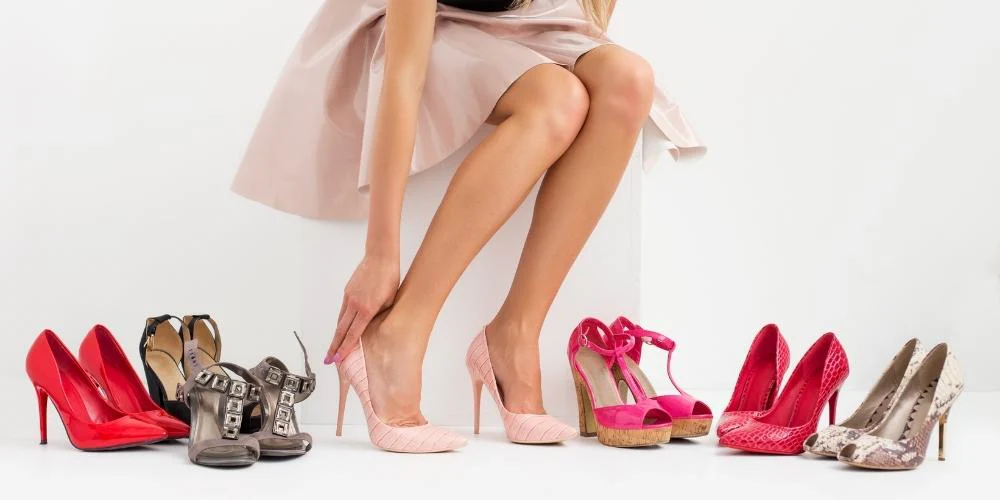
Our Top 4 Tips for Healthy Feet
Nov 04 , 2021
Tags - Tips for Healthy Feet
Your feet are one of your most important body parts, as they help you get to where you want to go and provide freedom of movement.
So keeping your feet healthy is extremely important to not only feel good, but to stay active too.
However, it’s very easy to take your feet for granted, until an issue occurs.
A lot of us don’t necessarily think about foot care, but foot health is important for everyone, and I’m sure no one wants any problems with pain or discomfort.
So before the warm weather upon us, it’s important to look after your feet now before they are more exposed to outside elements.
With that said, here are our top 4 tips for healthy feet.
1. Practice Good Hygiene
It sounds obvious, but you need to wash your feet daily - healthy feet start with good hygiene.
And this doesn’t mean letting the soap run down your legs whilst you're in the shower, but washing them in lukewarm water with a soft cloth or gentle sponge. Avoid using water that is too hot or too cold as this can damage your skin, especially if you’re diabetic with decreased skin sensation.
Every so often, exfoliate your feet to remove any dry, dead and dull skin and once washed, ensure you dry them thoroughly to avoid any fungal infections.
Whilst we’re talking about hygiene, this includes carefully trimming your toenails as well - but don’t cut them too short.
Because cutting nails too short can cause them to become ingrown, resulting in soreness and infections.
Podiatrists recommend cutting toenails straight across and then filing down the edges with an emery board.
2. Examine Your Feet Regularly
It’s important to examine your feet at least once a week to look out for any signs there may be a problem; if you’re diabetic, you should examine your feet on a daily basis.
When looking at your feet, you’ll want to check for any blisters, redness, cuts or cracked skin. If you cannot see the soles of your feet, use a hand mirror with magnification to ensure you don’t miss any spots.
Things to look out for include, scaling between toes which could signal athlete's foot or discoloration of nails which could suggest nail fungus.
And if anything seems out of the ordinary, consult your doctor or podiatrist to get this treated right away and stop it from getting worse.
3. Wear Properly Fitted Shoes
It’s very common to have one foot that’s slightly bigger than the other, and if this is true for you, you’ll want to fit shoes to your larger foot.
So when it comes to buying, the fit matters - don’t just squeeze in a pair in hope you’ll “break them in”.
In terms of fit, the ball of your foot should fit comfortably in the widest part of your shoe and there should be enough depth to avoid your toes from rubbing at the top. When trying them on, stand up and make sure you have around half an inch gap between your longest toe and the front of the shoe, and walk around to make sure they’re not rubbing or slipping off.
Consequently, if shoes don’t fit properly or allow your feet to breathe, it can lead to a range of podiatric issues.
Bonus tip: try shoes on at the end of the day which will compensate for any foot swelling, and wear the same types of socks when trying them on as you would wear them out.
4. Exercise Your Feet to Maintain Blood Flow
Generally speaking, if you have a poor blood flow to the feet you may experience coldness or numbness, cramping after exercise, swelling, a tingling sensation and slower nail growth.
In terms of exercise, walking is best and the number one recommendation for improving blood circulation. To begin with, you don’t have to walk for miles and miles, even just a small 5 minute walk a day will make a huge difference, then you can build on this as you’re able to do more.
But, always remember to wear the appropriate shoes for the exercise you are doing, i.e. don’t wear flip-flops if you’re going on a hike!
And when you’re not exercising, it’s important to keep your feet moving to keep the blood flowing. For instance, if you’re laying down in bed or sitting at your desk and your feet begin to feel numb, simply wiggle your toes and flex your ankles up and down.
Finishing Thoughts
By following these tips above, you can help to keep your feet healthy and active, but more importantly, pain free.
However, if an issue does arise, be sure to visit your doctor and do not attempt to treat any painful foot woes at home as this can make minor problems become major ones.
For more information, please get in touch today.
In the meantime, take a look at our full range of comfortable shoes here.
You may also like:
